

What is a backlink?
A backlink is a link from one page to another. If page A links to page B, we say that page B has a backlink from page A.
Backlinks are one of the most important ranking signals. There’s a direct correlation between quantity and quality of backlinks and rankings.
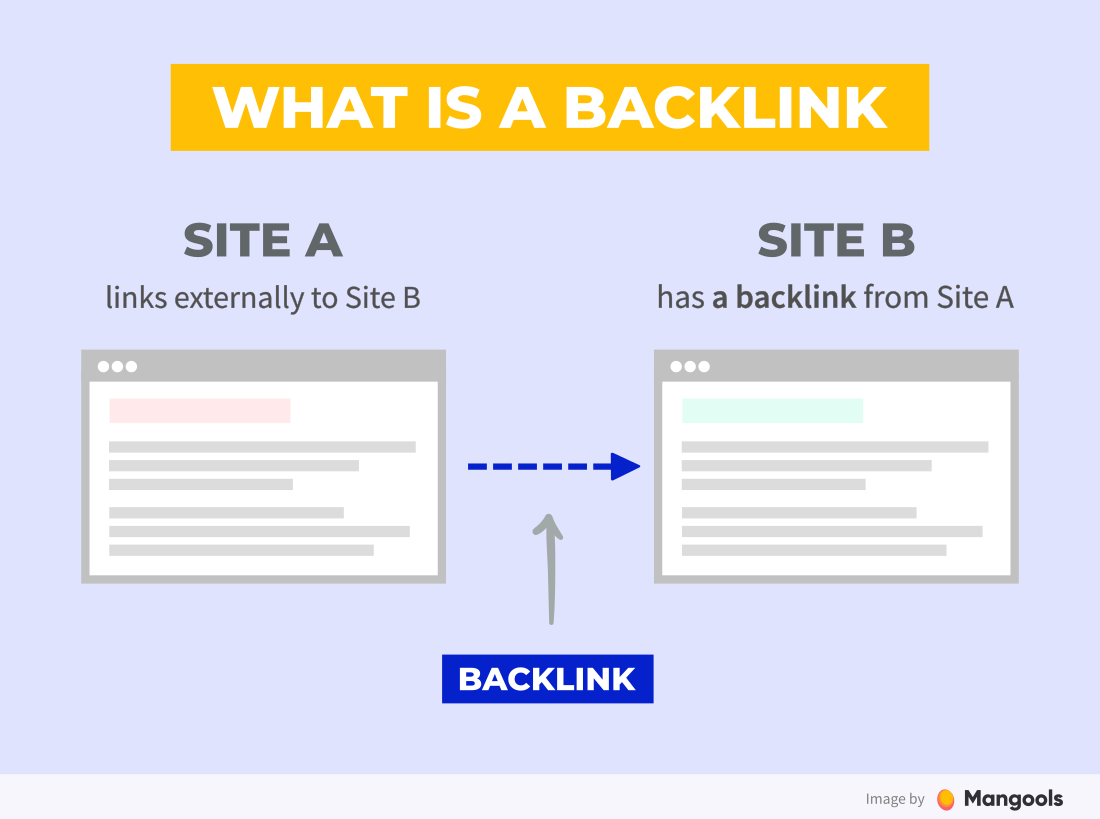
Why are backlinks so important?
Backlinks have been a very influential factor of search engine algorithms since the very beginning.
They work as academic citations. Search engine developers realized that if many quality resources link to a certain page, it means the page is valuable and trustworthy.
Link equity
Link equity (also called “link juice”) is a term used to describe the authority a page transfers to another page through a link.
Google PageRank
At the very beginning, Google created an algorithm called PageRank to incorporate the quality and quantity of backlinks into its ranking system and determine the relative importance of web pages in search results.
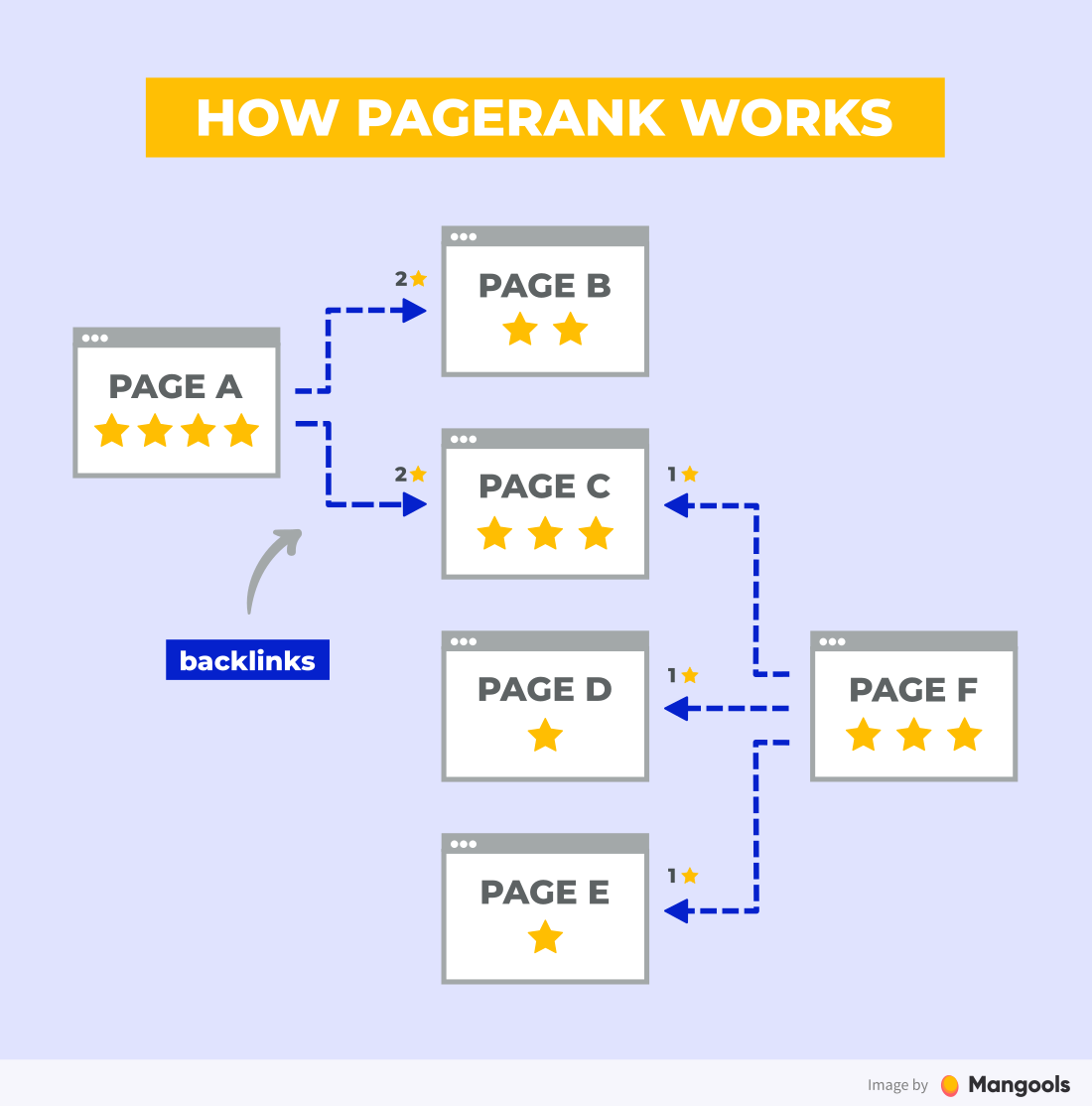
The three factors that influence the PageRank of a page are:
- Number of backlinks – the more backlinks the page has, the better
- Number of links on the linking page – the value (called link equity) is distributed among all the pages that are linked from the linking page
- PageRank of the linking page – a backlink from a page with higher PageRank passes more link equity
PageRank metric
Do not confuse the PageRank algorithm with an old metric of the same name that was used by Google to display the rank of the pages from 0 to 10.
They are not the same and while the PageRank metric was discontinued, the PageRank algorithm is still a part of Google’s ranking.
Read more in our detailed post about Google PageRank.
Types of links
Links can be classified into various categories. Here are the most basic ones you should know:
Internal vs. external links
This one’s quite obvious.
An internal link is a link from one page to another within the same website, while an external link is a link from an external website.
Nofollow links
A nofollow link is a link that contains a rel=”nofollow” attribute in its HTML code.
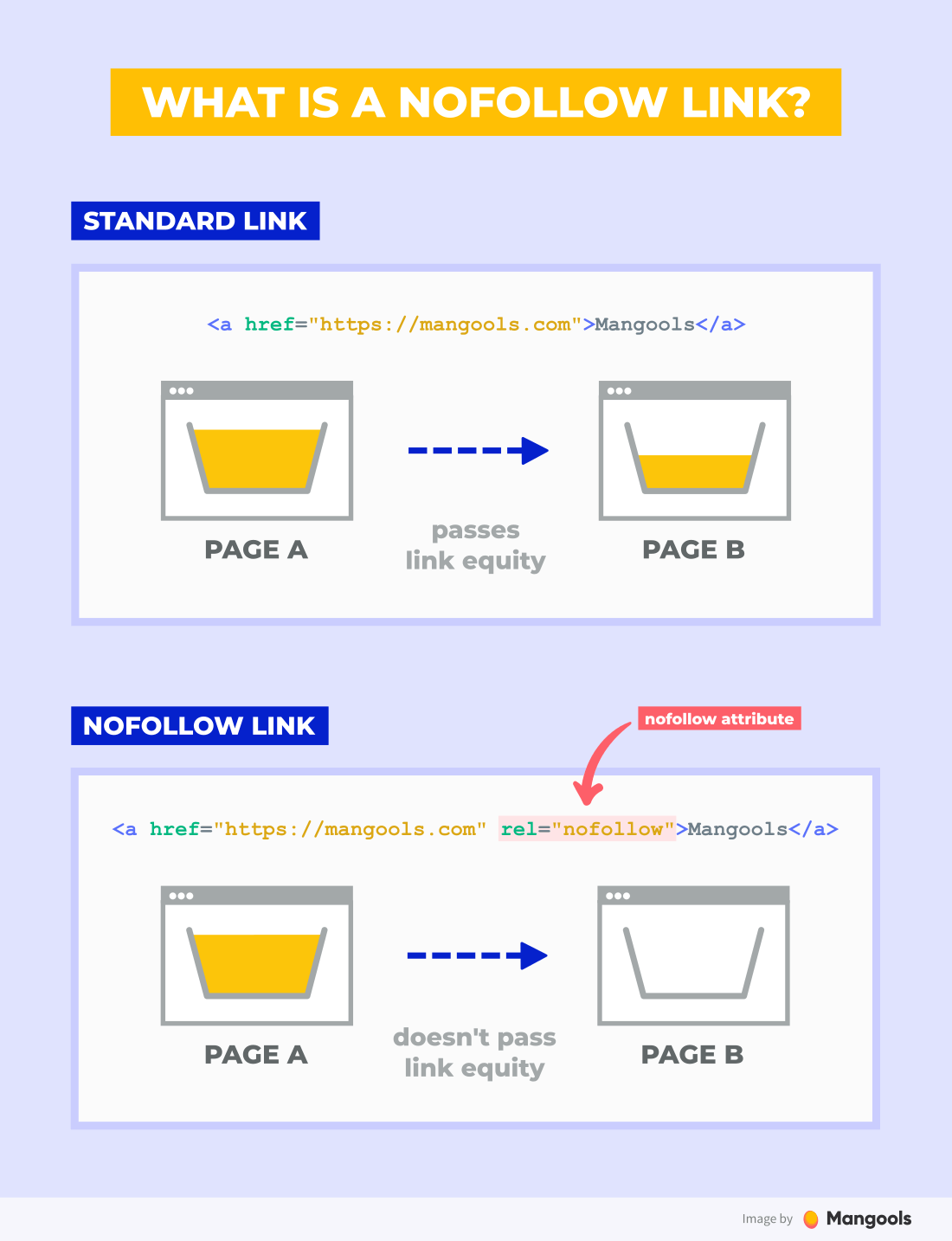
It was introduced in 2005 by Google and it tells search engines not to pass link equity to the linked page. The instances when the nofollow attribute can be used include:
- Links in comments – it helps to fight comment spam as it makes links in comments less valuable)
- Affiliate and sponsored links – with the nofollow attribute, you won’t violate Google’s rules about buying backlinks
- Links to websites you don’t want to endorse – sometimes you need to link to pages you don’t want to endorse
Note: Technically speaking, there’s no such thing as “dofollow” backlinks as there is no “dofollow” parameter. The term is used colloquially to differentiate links that pass link equity as opposed to nofollow links.
Although nofollow links don’t pass authority, they can bring other benefits:
- They may serve as a hint for Google – in 2019, Google announced that they will treat nofollow links as hints to better understand and analyze links
- They can bring you traffic – a nofollow link may not bring you any “SEO points” but it can still bring you relevant traffic
- They diversify your link profile – nofollow links are a natural part of every link profile and it would be odd not to have any; see the next point…
Link profile
Link profile is another important SEO term you should know. It is used to describe all the links that point to your website.
The quality of your link profile directly correlates with your rankings.
What does a good link profile look like?
- Diverse – a healthy link profile is a mix of various types of links (both standard and nofollow) and natural anchor texts
- Quality backlinks – a good link profile consists of quality backlinks links from relevant websites
On the other hand, too many low-quality links from spammy websites will be ignored at best and hurt your website at worst.
Anchor text
The anchor text is a visible, clickable part of a hyperlink. It helps crawlers to indicate what the linked page is about.
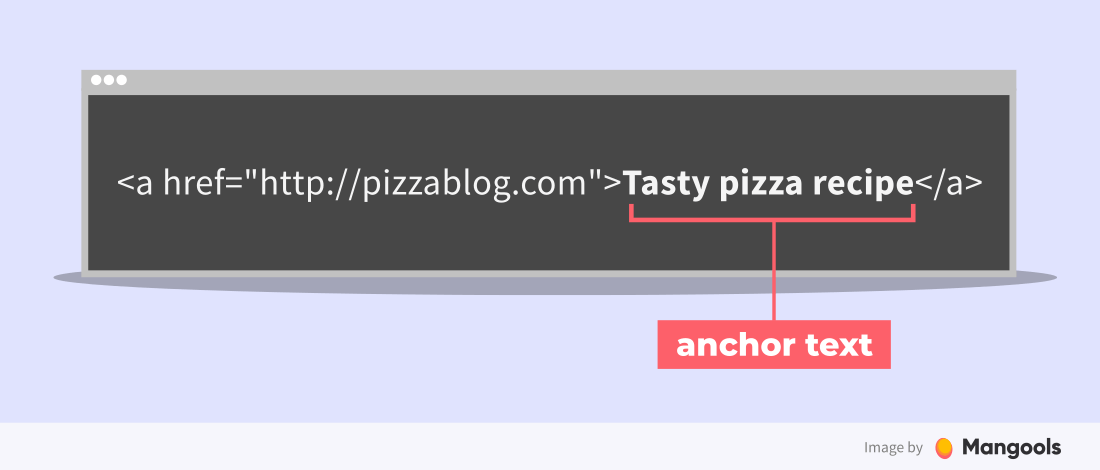
We differentiate various types of anchor texts:
- Brand name – e.g. “Mangools”
- Exact match – e.g. “SEO guide”
- Partial match – e.g. “practical SEO tutorial”
- Generic – e.g. “read more”
- Naked URL – e.g. “https://mangools.com/blog/learn-seo/”
If more pages link to you with relevant terms used in the anchor texts, it may help you rank for these terms in the search engines.
This doesn’t mean you should try to get keyword-stuffed anchor texts at any cost.
Quite the contrary, you should be very careful and aim at a natural mix of various anchor text types.
Any obvious attempt to manipulate the anchor text of your links may be detected and penalized by Google (more on Google penalties here).
Attributes of a valuable backlink
Not all backlinks are created equal.
Besides the obvious differences between internal and external links and standard vs. nofollow links, two backlinks may have different values (and pass different amounts of link equity) based on many other factors.
Here’s what a valuable backlink looks like:
1. Relevant
A valuable backlink is topically relevant. It means the linking page should be about the same or similar topic as the linked page.
For example:
If you have a post about hiking tips and you have two backlinks, one from a post about outdoor sports and the other from a post about politics, the former backlink is much more valuable.
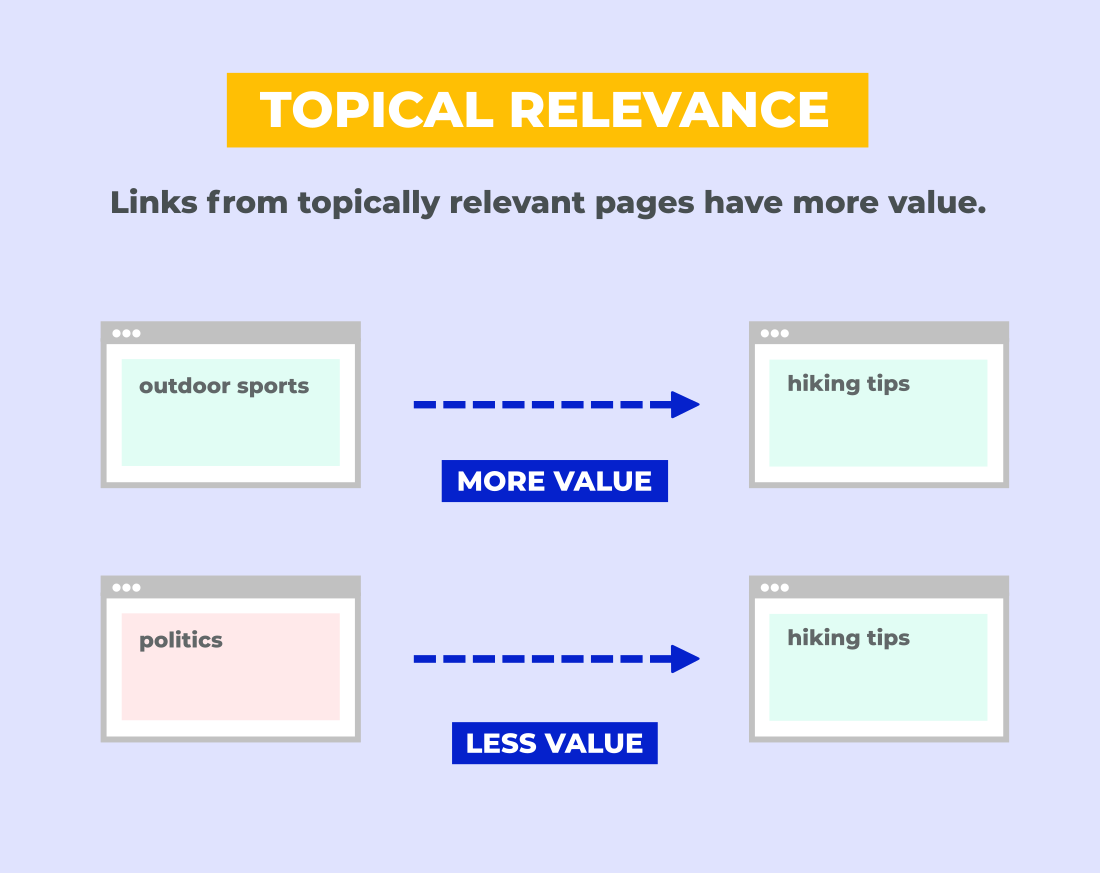
2. From an authoritative website
As we’ve explained previously with PageRank, pages with quality links pointing to them also pass more link equity to your page.
The more authoritative is the linking page, the more value the backlink has for you.
There is no official metric by Google that would represent the authority of a page but there are many metrics by commercial tools that can help you with the estimation.
The most popular are the Domain Authority and Page Authority by Moz.
3. Unique
The uniqueness of a backlink can be discussed on various levels:
a) Website level
A backlink from a website that hasn’t linked to you before is usually more valuable than the one from a site that has already linked to you before.
It is better to have 10 backlinks from 10 different websites than 50 backlinks from the same site.
Note: This doesn’t mean that having more backlinks from the same site is a bad thing (if it happens naturally). The links just may have a lower value.
b) Page level
If you have two links from the same page, the one that appears first may have more value than the second one.
(Google used to only count the first anchor text back in 2009. We don’t know how they treat them nowadays but we may assume it hasn’t changed.)
c) Number of other links
Last but not least, the PageRank is distributed equally across the linked pages.
So there’s a big difference between a backlink from a page that links to 3 resources and a backlink from a page that links to 30 resources.
4. Placed near the top in the body
A quality link is the one that can also bring you traffic.
Not only for the obvious reasons (new visitors) but also from the SEO point of view.
Google uses the so-called Reasonable Surfer Model that predicts how likely a user is to click on a link: “The amount of PageRank a link might pass along is based upon the probability that someone might click on a link.”
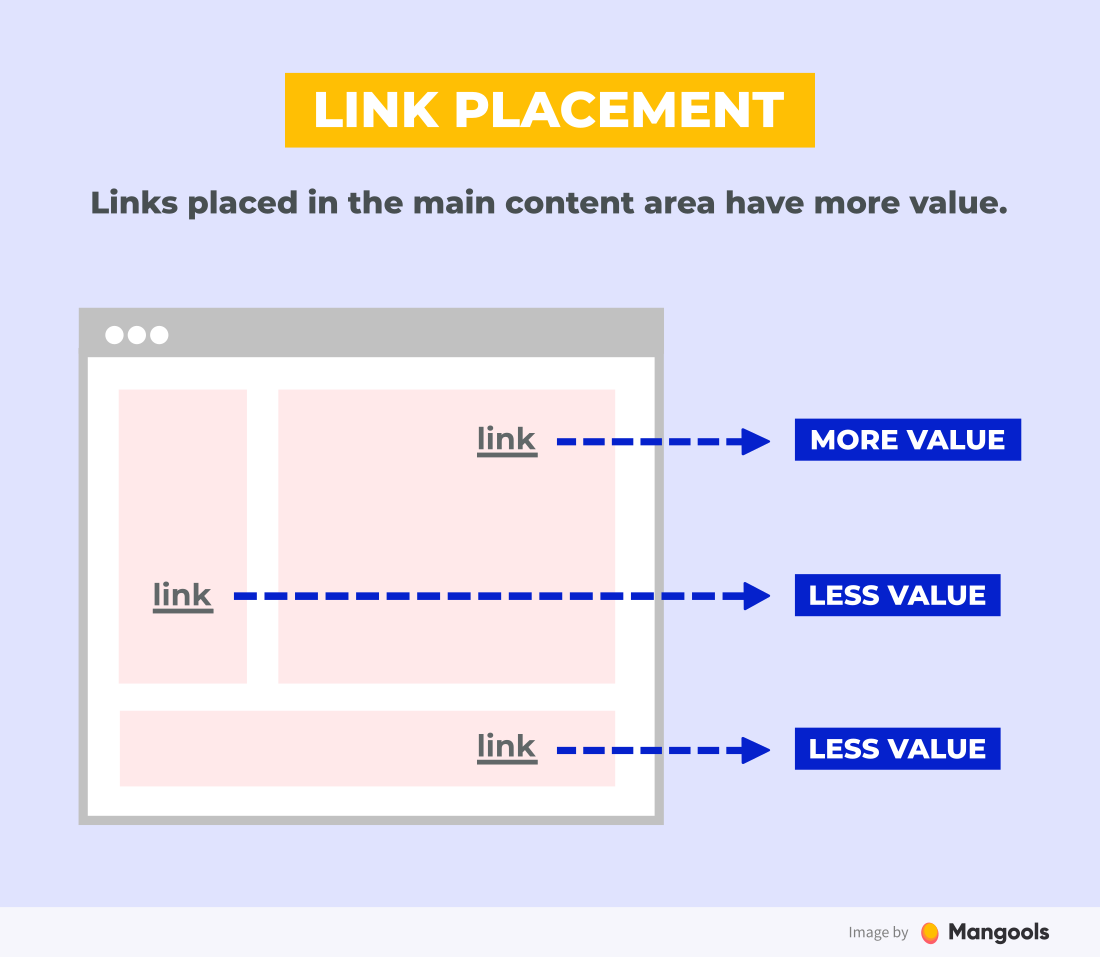
Matt Cutts, the former head of webspam at Google, said specifically that you should “…put valuable links toward the top of blog posts.”
The more prominently a backlink is placed, the more weight it is given by Google.
In other words, a backlink from the top of an article is better than a backlink from the bottom. And the backlink from the bottom of the article is better than the one in the footer or sidebar.
5. Has relevant anchor text
Anchor text plays a significant role in link building.
Namely, a backlink with an anchor text that is relevant to the linked page is more valuable than the one with an irrelevant or generic anchor.
This applies to the text surrounding the link as well, since links may carry context around them.
Should you do link building?
In the ideal world, all you would need to earn quality backlinks would be to create great content.
The reality is a bit more complicated:
- It is very hard (if not impossible) to get quality backlinks without any further effort from your side. Especially for new websites.
- It is very hard (if not impossible) to rank without any backlinks. Especially for new websites.
That’s why link building is a big part of SEO. But it’s also a bit controversial topic.
Google is not a big fan of any attempts to manipulate PageRank of your site. Here’s what they state in their Quality Guidelines:
Any links intended to manipulate PageRank or a site’s ranking in Google search results may be considered part of a link scheme and a violation of Google’s Webmaster Guidelines.
Does it mean you can’t try to influence the number and quality of your backlinks in any way?
We don’t think so. Not all forms of link building are spammy or manipulative.
There’s a lot of techniques that can help you get backlinks while providing value to the users. They’re just not as instant as writing spam comments or buying a bunch of links from Fiverr.
Should you buy links?
Now buying the backlinks is a whole different chapter. Most SEO experts will tell you that it is not worth it.
Here are two main disadvantages of link buying:
- It is risky – buying backlinks is a big no-no for Google and if they find out, you’ll get a manual penalty, which is something your website may not recover from
- It is expensive – a quality backlink is costly (starting at around $100/backlink, usually much more); of course, one backlink won’t make you rank so you’ll have to spend a lot to get the results
Yet, the link selling industry is quite alive and buying backlinks is a common practice.
The final decision is up to you. Just remember that it is a very risky strategy that may not pay off in the long run.

Expert insight by Alexandra Tachalova
Link builder, founder of Digital Olympus
Keep these essential points in mind when you step-up your link building game:
1. Always evaluate link quality from a long-term perspective.
Build only those links that will have the highest chances of working on a long-term basis. There are two reasons behind this:
First, it’s much more beneficial for your site to acquire long-term links on quality sites because they can keep growing in value over time.
Second, links should help you prove to Google that you’re a trustworthy brand, and links from mediocre sites won’t let you attain that position.
When it comes to evaluating link quality, I always look at a broad scope of metrics like a decent domain rating, level of organic traffic, and positive growth in the number of referring domains, etc. However, the most important criterion is whether or not a site represents a real brand.
2. Keep your link profile as diverse as possible.
We’ve seen cases where marketers have been so focused on building only certain types of links that they have neglected the rest of their options.
I would say that’s one of the shortest routes to penalization, or at least it invites Google to be suspicious about unnatural link building. Being too narrow and obvious about artificial connections will lead to a good drop in rankings resulting in traffic loss.
A solid link building strategy should always include a variety of ways to get links, keeping your backlink profile as diverse as possible while still remaining relevant.
Link building strategies
There’s plenty of link building techniques, hacks and tips (you can check our big list of 60+ link building techniques for inspiration).
In this SEO guide, we’ll cover the 3 most common strategies that work very well.
Linkable assets
The most natural link building technique is to create a unique and valuable piece of content – a so-called linkable asset – that will attract backlinks.
A linkable asset can be any piece of content but there are certain types of content that work perfectly for this. These include:
- ultimate guides
- big lists
- research with unique data
- resource directories
- free tools
The next step is to find websites that might want to link to you and contact them (more on that in a while).
Tip: Sometimes you don’t even need to ask for a backlink directly. You can contact the influencers and experts in your field, asking for honest feedback.
If your content is really great and unique (and it should be for this strategy to work), they may link to it or share it on social media by themselves.
As a bonus, you’ll start some valuable relationships that may be useful in the future.
Once you get backlinks to your linkable asset, you can redirect the “link juice” to your other pages (e.g. “money” pages) through internal links.
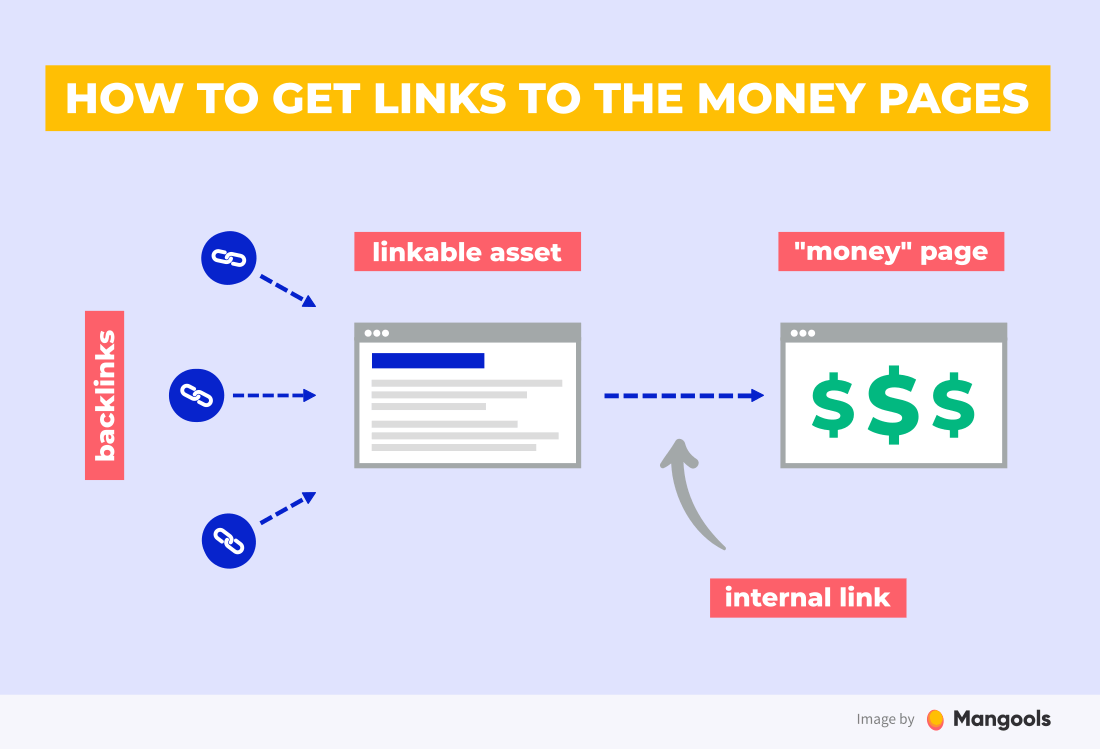
Guest posting
Guest posting (or guest blogging) is definitely the most popular link building technique. It is quite simple (although not easy) and scalable.
How guest blogging works (in a nutshell):
Author from Site A writes a guest post for Site B. The post contains a link to his own web. Site B gets a free piece of content and Site A gets a free backlink. Win-win.
So, how to find blogs that accept guest posts relevant to your niche?
Try to use specific search operators that help you to filter the ones that are relevant to you. For example: “your niche” + “write for us”.
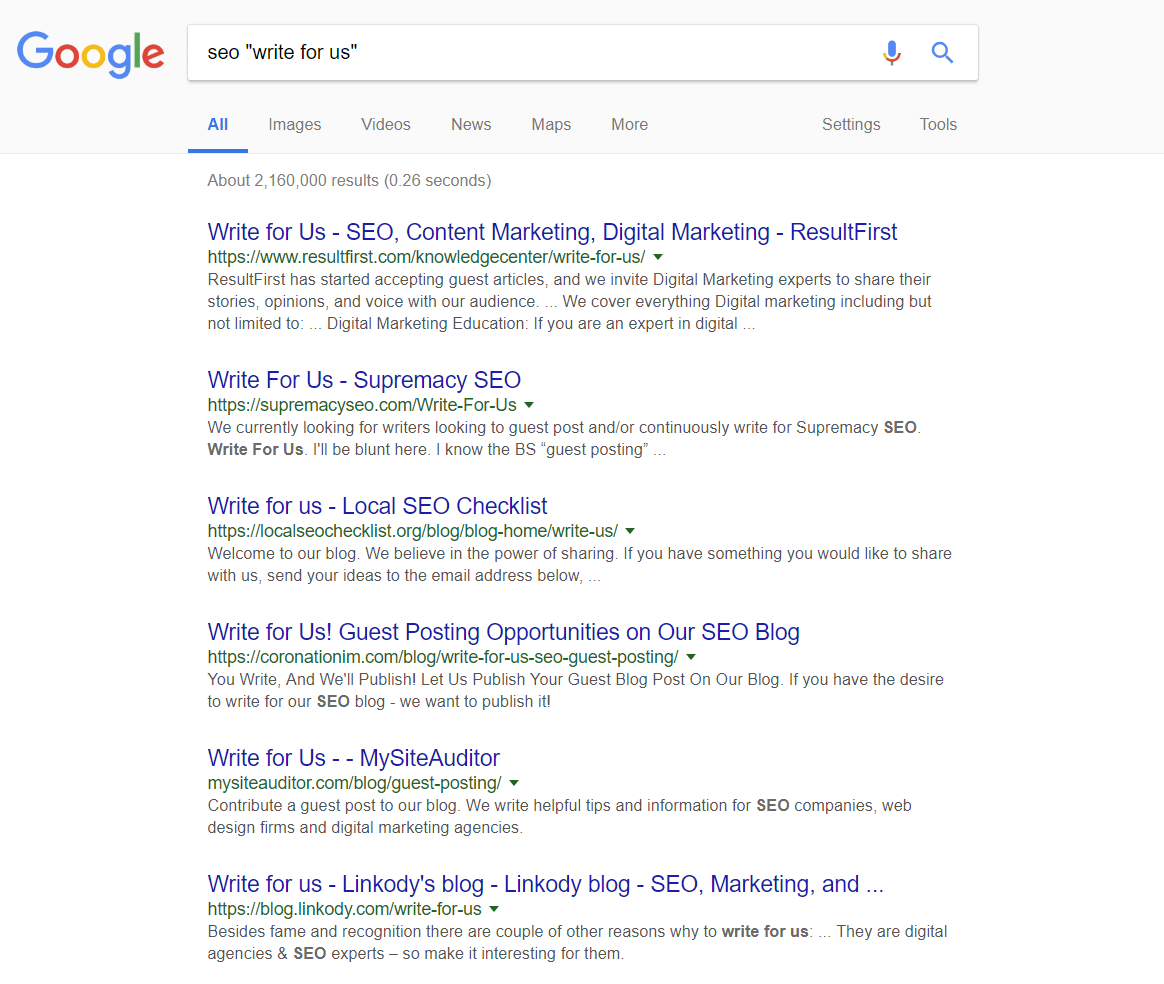
Once you find them, read their guest post guidelines and contact the owner with your guest post pitch.
Competitor’s backlinks
Scanning through the link profiles of your competitors is a great way to find websites that may be willing to link to you. (After all, they already linked to a similar page, right?)
All you need is a backlink analysis tool (like LinkMiner) that will help you find the backlinks of your competitors.
You can either start by entering the domain:
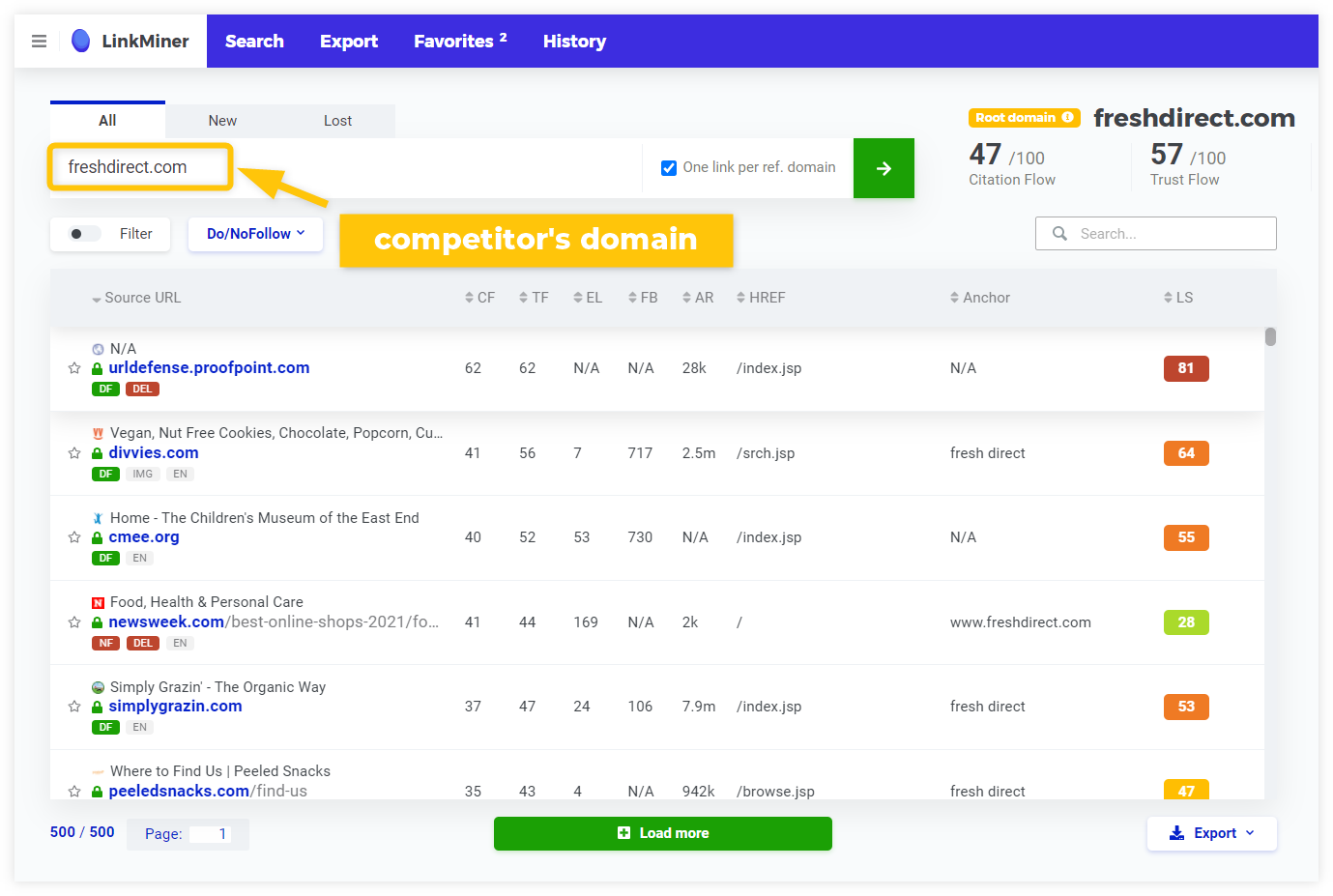
…or focus on a specific URL (e.g. your competitor’s post on the same topic that you want to rank for):
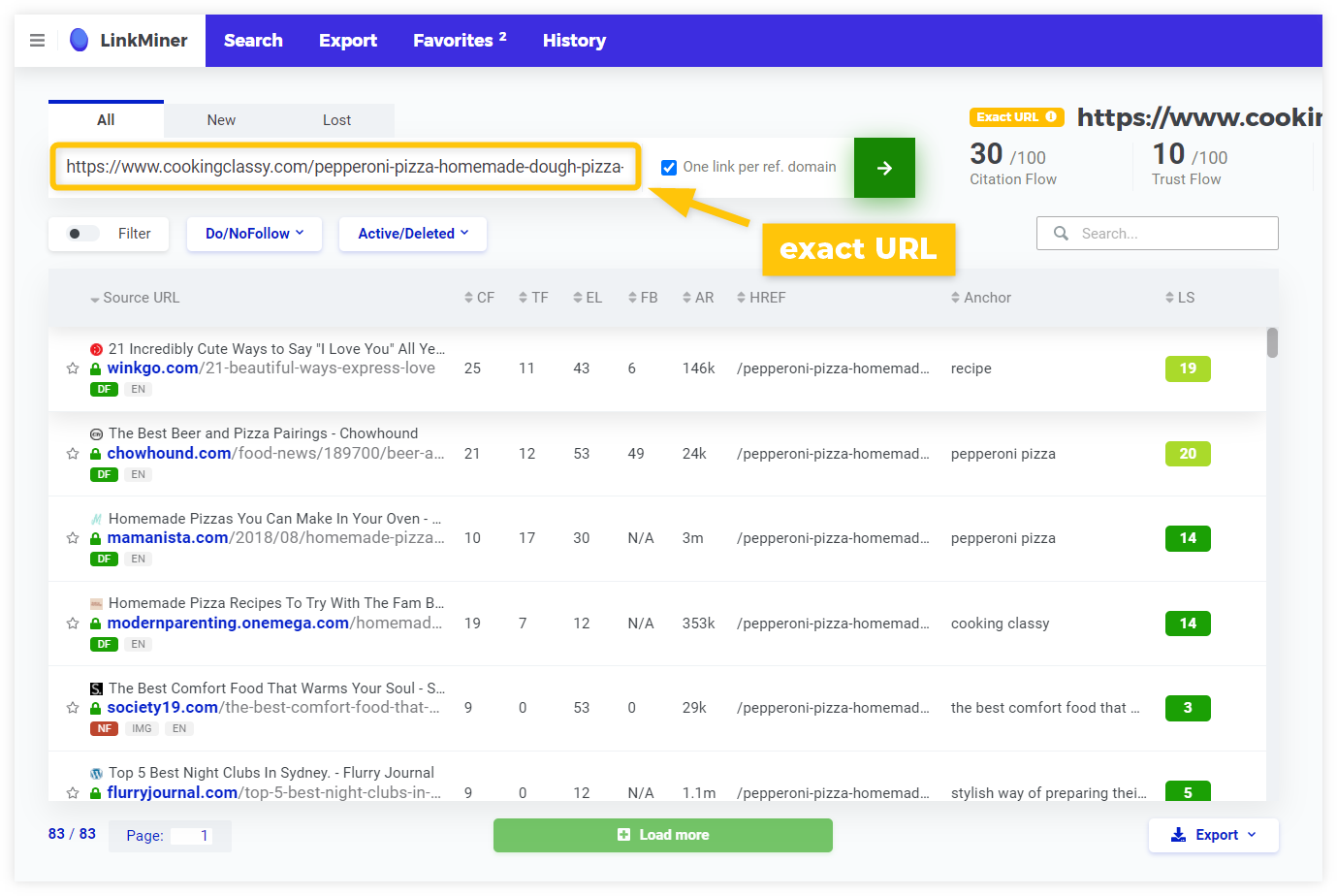
The tool will show you all the backlinks and some additional information about them (the authority, anchor text, attributes, etc.)
When analyzing your competitor’s backlinks, you should consider:
- Link relevance – Would a backlink from this page be relevant to your content?
- Link strength – What is the authority of the linking page?
- Difficulty – Will you be able to get the same backlink?
The next step is the so-called email outreach – contacting the website owners to replace the backlink of your competitor (also known as The Skyscraper Technique) or add your backlink as an additional resource.
The Skyscraper Technique
The Skyscraper Technique (named by Brian Dean from Backlinko) works like this:
- Find the best article on a certain topic, write something that is even better (see the 10x content technique).
- Then contact all the websites linking to your competitor and ask them to link to you instead.
Other common link building techniques
- Broken link building – find websites with inactive links and suggest your content as a replacement
- Brand mentions – find unlinked mentions of your brand (you can use Google Alerts) and ask the web owners to link the mention
- Testimonials – write a testimonial for a product or service and get your site linked next to your name
- Roundups, expert insights – get featured in niche roundups or articles that require expert insights (see HARO technique)
- Social backlinks (nofollow) – share your content on social media, promote it on Facebook/Twitter/Pinterest, join discussions, comment on relevant posts
- Forums and Q&A sites (nofollow) – a well-placed link with added value on Quora or Reddit can drive a lot of traffic throughout time; avoid mindless spam at all cost
Useful SEO Content
If you like above SEO tips, you will also like the post “What is SEO” written by SEO expert George Panayides, a Managing Director of The Digital xx Agency. It will help you to make your SEO Content stand out from your competitors.